Litho Printing Services
What Are Litho Printing Services and What Are They Used For?
If you are one of the people who regularly hears the term “litho printing” and you are not exactly sure what it entails, we are here to guide you and give you more information about what litho printing is and in which context litho printing services are provided in the industry.
Litho is short for lithographic. This type of printing is based on the basic principle that oil and water cannot be mixed, and it differs from other printing methods such as intaglio, where the non-image and image are set at different levels, in that lithography printing is set on only one level or surface. This also means that the surface that is printed on should be flat. Flat stones are set in a way that the areas that make up the image will repel the water-based ink, while the areas of non-image will attract the oil-based ink. In layman’s terms, this means that the image will essentially only be made up of the areas that attract oil-based ink.
Unlike many other printing processes, lithographic printing is extremely versatile and can be effectively applied in artistic and industrial environments. It is often used as a medium for artists and students for the expression of individual work, but can also be used with great success in large-scale industrial operations that provide litho printing services for a range of clients. It is truly one of the most innovative printing methodologies and has a colourful history.
The History of Lithographic Printing
As a young boy, Alois Senefelder regularly performed plays in theatres, but also supplemented his income by making copies of his plays to sell, and as a result, he set out to find a way in which to print his works in a quick and efficient way. Traditional presses in those days used copper plates and the characters were set in reverse, which was very complicated. Senefelder used much cheaper limestone slabs to practice his reverse imaging on. He also concocted a corrector fluid from wax, lampblack and water to correct the mistakes he made on the plates. It was the interaction between the correction fluid and the limestone that subsequently led to his discovery of lithographic printing.
He realised that if he drew the image on the limestone with the correction fluid, it would render that surface resistant to water, and he could then paint the limestone with water and then paint over it with an ink that was oil-based. This meant that the image would appear the right side up, and as a result, chemical printing was invented and lithography was patented in 1799. Today, the basic principle of this printing remains the same, but technology developments constantly update the process and machinery used for litho printing.
Modern Applications of Lithography
As discussed before, litho printing can be used very effectively in individual artistic projects, as well as mass produced industrial applications. The ability to transfer photographic images onto the plates has massively reduced the time it takes to print images and very complicated images can be reproduced at high speeds. As a printing methodology, it is has truly come into its own in this modern day. Today, most magazines, cards, newspapers and other printed goods are printed with the use of litho printing services. It is also a very unrestricted printing methodology and can include any range of colours, sizes and images, and can easily replicate any kind of texture or effect, such as drawings, photographs or paintings. Today, the vast possibilities and applications of litho printing services are practically unlimited.
If you want to print something and are in need of litho printing services, please call our team at Podd Display today, and we will fill you in on all the fantastic options that we have!


